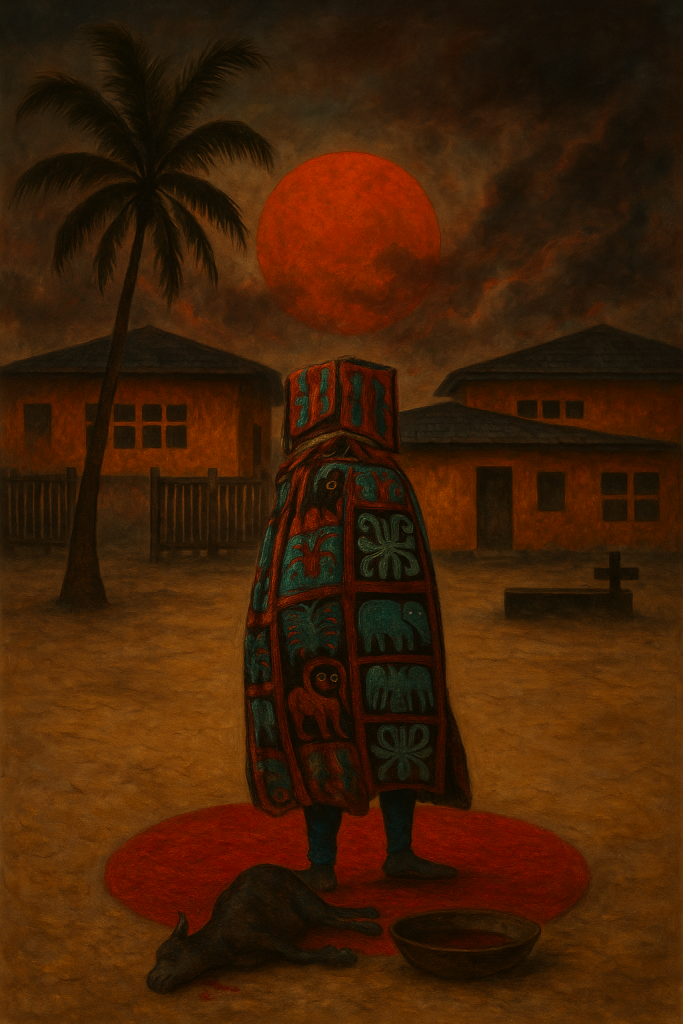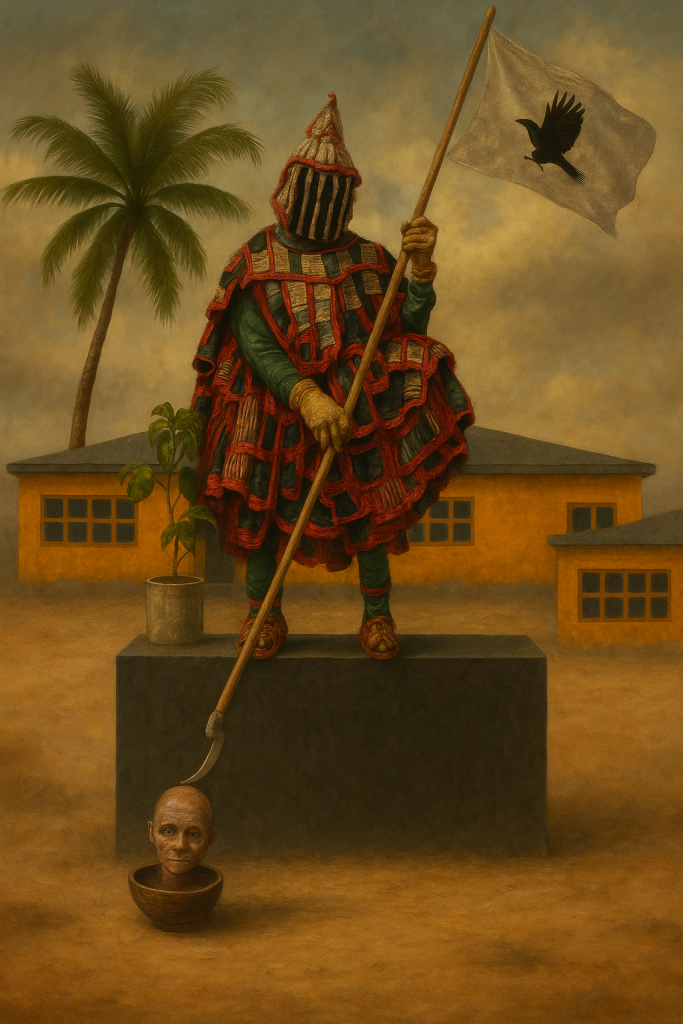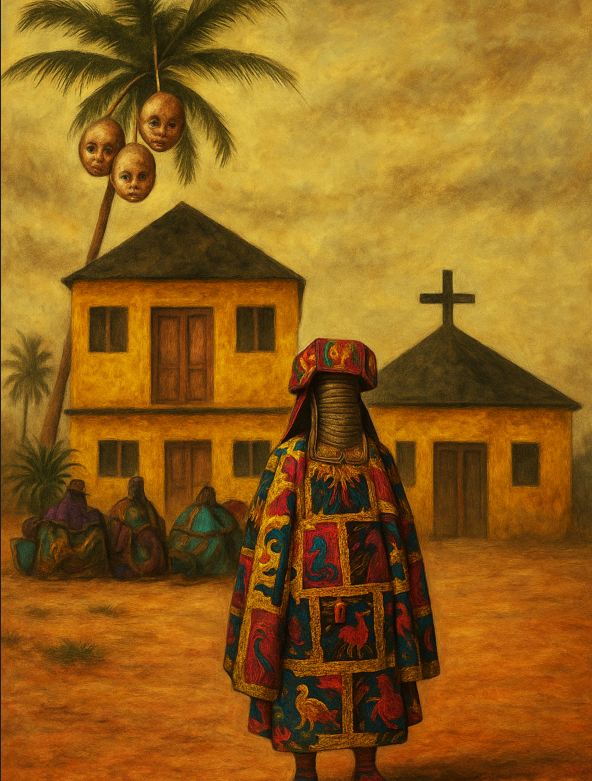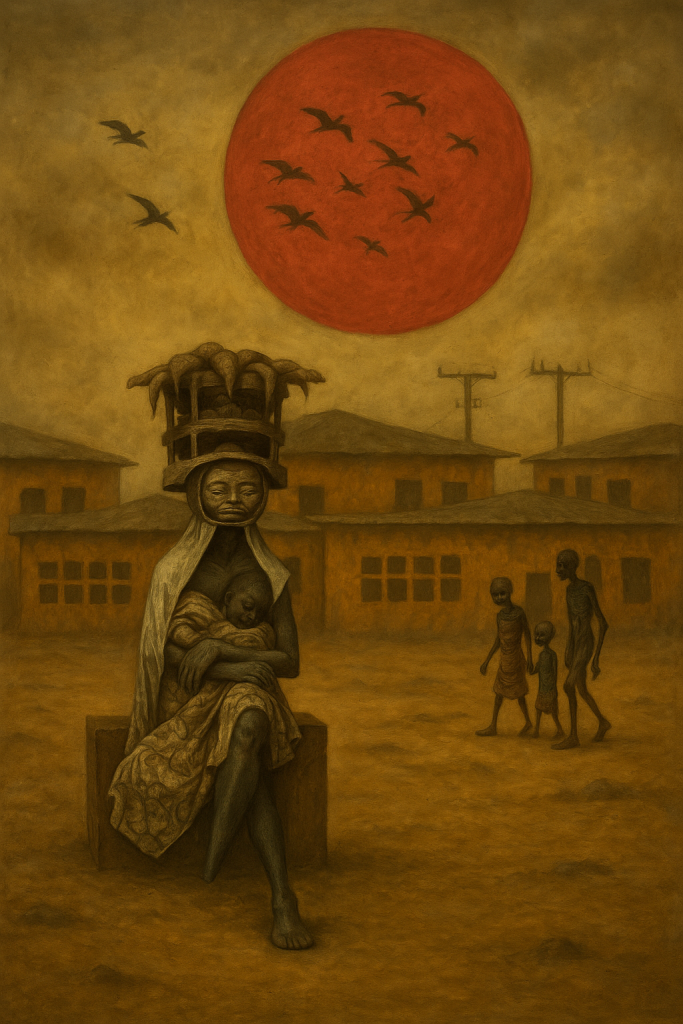Olawale Gbologe’s Visual Tapestry of Yoruba Masquerades
Olawale Gbologe is a digital artist that provides comprehensive stories about Yoruba culture and traditions. His most recent work of art, titled Aye, is a testament to this; the work displays various pictures of Yoruba masquerades known as egungun in Yoruba, which are an essential aspect of Yoruba culture.
Gbologe drew inspiration from childhood recollections of accompanying his parents to egungun festivals and watching them dance and perform for the audience.
In Yoruba culture, egungun are Yoruba ancestors who lived on Earth, died, and are now recognized as egungun. They have spiritual and cultural importance for the Yoruba people.
Olawale Gbologe’s artwork ‘Aye’ depicts four images of popular masquerades from the Yoruba ethnic group. Which are Gelede, and Agemo. These masquerades differ from one another in terms of their function and worship.
The first image is of Egungun. Egungun is a broad term for all masquerades in Yoruba nation. The Egungun tradition is an important spiritual and cultural activity for the Yoruba people of Nigeria, Benin, and Togo. It emphasizes ancestral devotion and is manifested through masked masqueraders, ritual performances, and communal celebrations. The term Egungun approximately translates to “powers concealed” or “ancestor in masquerade.” Egungun masqueraders dress in complex, multilayered costumes composed of luxurious fabrics, leather, beads, and charms. The entire face is covered, and the identity is completely hidden.
Olawale focused on this egungun and the concept of masquerade in Africa; he also drew images of two other popular egungun among the yoruba ethnic group, delving more into the types of egungun seen in Yorubaland.
The next in this sequence is the gelede. According to the artist, the gelede is performed to respect and appease powerful feminine forces, both human and spiritual, who are said to regulate fertility, health, and prosperity. These are not physical mothers, but rather metaphorical representations of feminine authority and ancestral influences. Gelede masqueraders wear ornate wooden headdresses or masks with carved scenery, animals, or symbolic characters on top. The clothes are vibrant and full-bodied, covering the performer completely.In Olawale’s piece, the gelede masquerade sits on a block while carrying a small baby. There are houses and people in the backdrop, and the image also includes some dusty dry areas, giving the artwork a more ethereal air, similar to how one would feel in the company of their African ancestors.
The third image depicts the Agemo. Agemo refers to both the god (orisha) and the masqueraders (or their human representations) who act as liaisons between the divine and the Ijebu people of the Yoruba ethnic group. The Agemo deity is revered as a guardian spirit and protector of the Ijebu kingdom, representing peace, fertility, rain, and social togetherness. The Agemo masquerades are supposed to represent supernatural entities, not only entertainers. Also in Olawale’s art, there are four agemo masquerades, with only one standing in the foreground and the others seated behind them.
The entire image is strange, depicting what appear to be decapitated heads hanging from a palm tree. The image follows the style of the preceding artworks, with arid dusty regions and houses in the background, creating the overall impression of surrealism.
Olawale Gbologe artworks are not only beautiful, but also interesting. Olawale’s future in the art business looks promising and I will definitely love to see more of his works.




